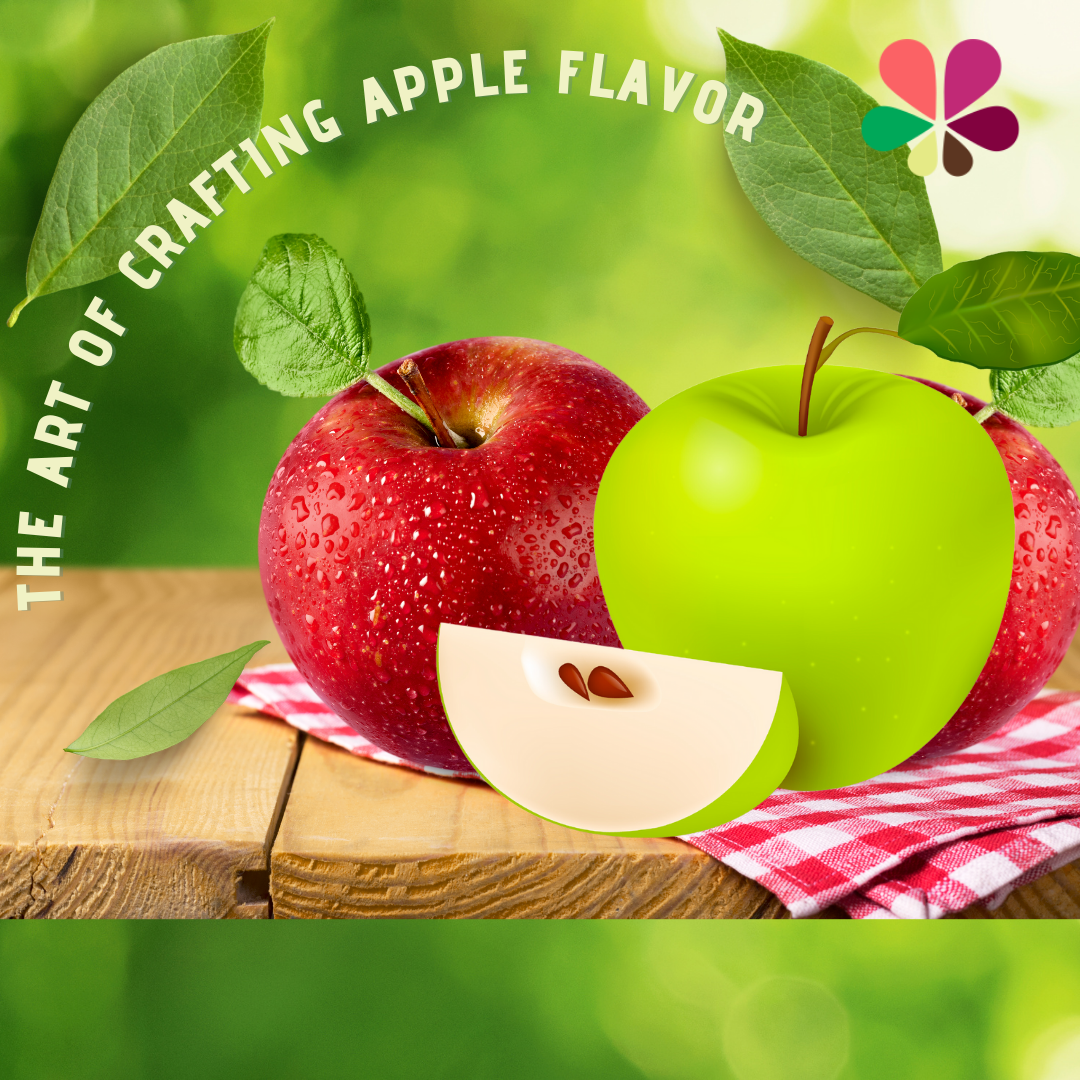Introduction
The enchanting aroma and flavour of apples have captivated our senses for centuries. Whether enjoyed as a crisp bite, a refreshing glass of apple juice, or a delectable apple pie, the essence of this fruit is simply irresistible. Creating apple flavor is an intricate process that combines science and artistry, offering a diverse array of products ranging from apple-scented candles to apple-flavoured beverages. In this article, we will explore the fascinating journey of making apple flavor, from orchard to product.
- Selecting the Perfect Apples
The journey of creating apple flavour begins with the selection of the right apples. Different apple varieties offer unique profiles and aromatic notes. Varieties like Granny Smith offer a tangy and tart flavor, while Fuji apples provide sweetness and a subtle floral aroma. Orchards select apples based on their flavor, aroma, and texture to meet the specific requirements of the product being developed.
- Harvesting and Ripening
Timing is critical when harvesting apples for flavour extraction. Apples are typically harvested in the fall when they are at the peak of ripeness. Some apples are left to ripen on the tree while others are picked slightly early to manage sugar and acidity levels. This precision ensures that the extracted flavor captures the essence of the fruit at its best.
- Processing Apples
Once harvested, the apples are thoroughly cleaned and inspected. They are then processed to extract the apple flavour. There are various methods of extraction:
a. Juice Extraction: Apples are crushed, and the juice is extracted, which can be used as a base for apple flavoring in products like apple juice and cider.
b. Pulp and Peel Extraction: Extracting flavor from the pulp and peel is often used for apple-flavoured snacks and desserts. This process captures the essence of the skin, flesh, and core of the apple.
c. Steam Distillation: In this method, steam is passed through the apple material to separate the volatile compounds that contribute to the flavor. This technique is often used for concentrated extracts.
- Flavour Isolation
The next step involves isolating and refining the specific aroma and flavor compounds. This is done through a series of techniques such as distillation, solvent extraction, and cold-pressing. The aim is to capture the pure essence of the apple, avoiding any unwanted components.
- Blending and Development
Creating a consistent and balanced apple flavor often requires blending different apple extracts, adjusting sweetness and acidity, and fine-tuning the aromatic profile. Food scientists and flavorists play a vital role in this step, working with natural and artificial components to achieve the desired flavor.
- Product Application
The apple flavour is now ready to be incorporated into a wide range of products, including:
a. Beverages: Apple flavour can be used in apple juice, cider, cocktails, and soft drinks.
b. Baked Goods: It enhances the taste of apple pies, muffins, and cakes.
c. Snacks: Apple-flavoured chips, candies, and snacks delight taste buds.
d. Aromatherapy and Home Products: Apple-scented candles, diffusers, and potpourri bring the delightful aroma into our homes.
- Quality Control
Consistency is key in flavor production. Quality control measures are put in place to ensure that each batch of apple flavour meets the desired taste and aroma characteristics. Sensory panels, gas chromatography, and mass spectrometry are some of the techniques employed to verify the quality.
Conclusion
The process of making apple flavour is a complex yet enchanting journey that combines the art of selecting the right apples, extracting the essence of the fruit, and creating a harmonious and consistent flavor. Whether you’re sipping on a glass of apple juice, savoring a slice of apple pie, or enjoying the aroma of an apple-scented candle, the skill and dedication that goes into crafting apple flavor make it a delightful experience for our senses.

